Stress Emergence in Corn
Overview
- Early planting increases the likelihood that seeds will be exposed to stressful environmental conditions including cold, wet soils or extended periods of low temperatures.
- These conditions can cause injury to emerging shoot and root structures, leading to stand and yield loss. They can also promote damage from early season insects and seedling diseases.
- Our agronomic rating called stress emergence can help growers in choosing hybrids that are suitable for their specific early season conditions.
- To generate stress emergence ratings, our research tests hybrids under a wide range of stressful environments in field and lab trials. Hybrids that show superior potential for stand establishment under stress are assigned higher ratings.
- Besides selecting hybrids with strong stress emergence, premium seed treatments that protect against early-season diseases and insects are an essential component of early season risk management.
Background
Growers have long recognized the importance of early planting to maximize corn yield potential. The emerging seedling can experience significant stress levels if early planting is followed by cold, wet weather. As planting dates have moved earlier, the potential for cold soil at planting and cold, wet weather after planting has increased. In fact, it is not unusual for early planted corn to remain in cold, saturated soil for three weeks or longer before emerging.
Two recent trends, early planting and reduced tillage, have introduced early season cold stress into areas not usually affected by this problem. Even in southern and western regions of the U.S., corn grown in these production systems can experience similar stress levels to those of colder northern regions. Although there are many advantages to reduced tillage, the level of early-season stress has increased along with its adoption. This is due primarily to lower soil temperatures, water retained in crop residue, and slower seedbed drying. Corn grown under irrigation can also experience significant stress if the irrigation water is sufficiently cold.
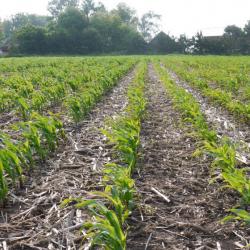
Although corn, with its tropical origins, displays a general sensitivity to early-season stress, research has shown that hybrids differ in their ability to emerge in stress environments. This genetic variation is reflected in the hybrid’s emergence rating, which is applied to all hybrids to help farmers select appropriate products for cold-stress fields.
Impact of Cold Stress on Stand Establishment
The optimal temperature for corn emergence is in the range of 80° to 90°F. Emergence is greatly reduced at lower temperatures and is effectively halted around 50° to 55°F or below. Since soil temperatures in the early season are almost never optimal, emerging seeds will experience a degree of stress almost everywhere in North America. The degree of stress, and potential damage from stress, is determined to a large extent by soil and water temperatures during imbibition and seedling emergence.
For successful emergence to occur, all parts of the shoot (roots, mesocotyl, coleoptile and leaf within) must work in a coordinated way to push the coleoptile above the soil surface and allow the first leaf to unfurl. Damage to any one of these structures will likely result in loss of the seedling and its yield potential. The section below describes some of the common causal events.
The Critical First Hours
When the dry seed imbibes cold water (typically 50°F or below), imbibitional chilling injury may result. The degree of damage ranges from seed death to abnormalities such as corkscrews or fused coleoptiles (Figures 2 and 3).
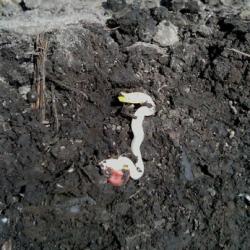
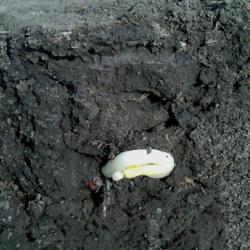
The potential for cold water damage generally decreases as the seedlings emerge. It also decreases if the initial imbibition takes place at temperatures above 50°F. This may help explain observations where early planted corn, which was followed by favorable weather, emerged better than corn planted later and followed by a cold spell or snow cover.
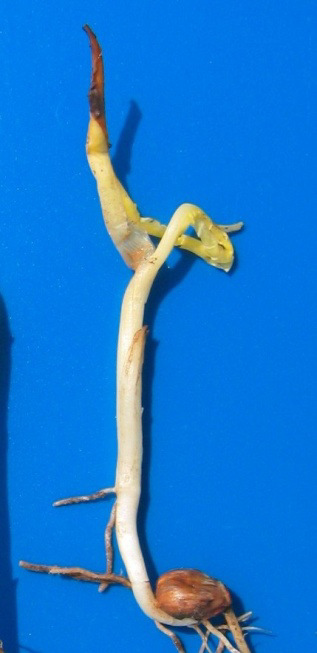
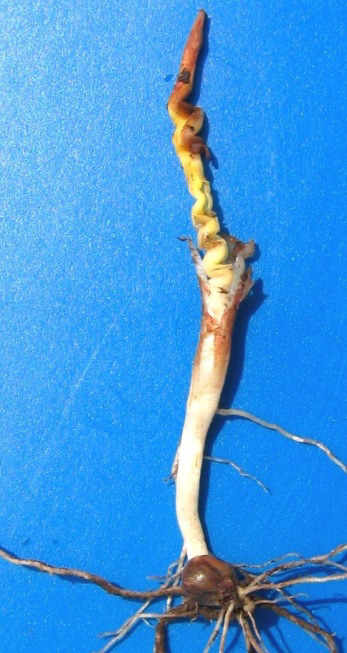
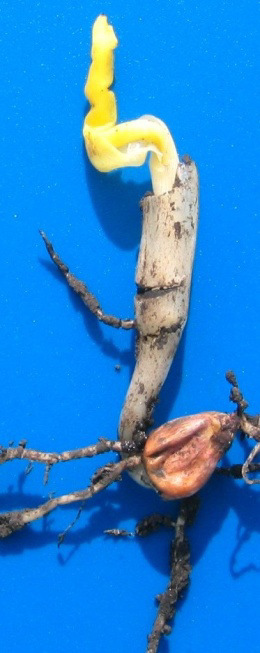
Figure 3. Common symptoms of cold damage during imbibition and seedling emergence.
Damage to the emerging root usually has less severe consequences on seedling survival. This is because the primary root, which is the first structure to emerge, plays a relatively minor role in seedling establishment compared to the lateral and nodal roots. Seedling establishment can usually progress normally if the lateral and nodal roots are intact. Any damage to the roots, however, will likely reduce vigor and increase the potential for disease and insect injury. It is important to note that cold damage to emergence is generally irreversible. It is also difficult to diagnose since it usually occurs below the soil surface, long before the crop emerges. Above-ground symptoms of damage may take weeks to become apparent.
Stress Emergence Ratings
Our stress emergence rating helps categorize hybrids for their genetic potential to emerge under stressful environmental conditions (including cold, wet soils or short periods of severe low temperatures) relative to other hybrids. This rating focuses on the ability of a hybrid to establish stand and is different than some seedling “vigor” ratings which often characterize differences in seedling growth rate after emergence.
A long term, large scale research effort was conducted to create and validate a lab assay that accurately characterizes stress emergence differences. A typical testing site was characterized by large amounts of residue, cold soil (below 50°F) at planting followed by cold rain or snow and emergence usually requiring three to four weeks. From this field work, the lab assay was created that reflects the stressful field conditions. These lab tests provide consistent and reproducible test conditions coupled with the flexibility of year-round testing. These lab assays are used to support hybrid advancement decisions and also to support breeding efforts to improve early season stress tolerance through maker-assisted selection.
Stress emergence is an agronomic rating and is not a rating for seedling disease susceptibility. Also, stress emergence should not be confused with early growth ratings, which refer to seedling vigor after emergence. Seedling vigor often reflects hybrid differences in rate of growth of the vegetative structures (leaves) but does not correlate well to stand establishment.
It should be noted that the level of early season stress tolerance is limited in corn. Thus, even hybrids with strong stress emergence will experience some level of injury and stand loss if the conditions are sufficiently severe.
Article credit: Imad Saab and Brent Wilson
